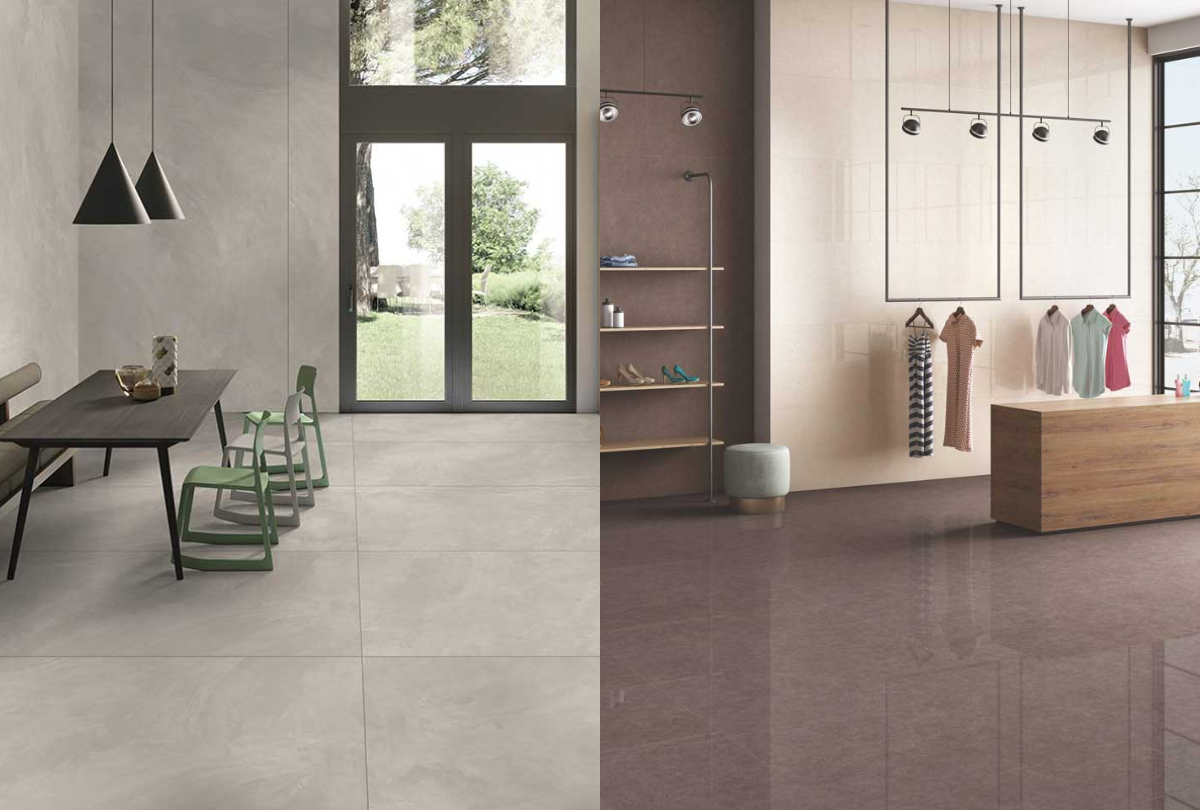
GVT tiles and PGVT tiles are two types of porcelain tiles that are commonly used in both residential and commercial spaces. Both types of tiles are made from porcelain, a type of ceramic material that is known for its durability and resistance to wear and tear.
However, there are some key differences between GVT tiles and PGVT tiles that are important to consider when choosing which type of tile to use in your project.
Key Differences Between GVT Tiles And PGVT Tiles
Manufacturing Process
GVT tiles, also known as Glazed Vitrified Tiles, are made from a mixture of clay, feldspar, and silica. The mixture is then pressed into a mold and fired at a high temperature to create a hard, dense tile. GVT tiles are typically glazed, which means that they have a glossy finish that is created by applying a liquid glass coating to the surface of the tile.
On the other hand, PGVT tiles, also known as Polished Glazed Vitrified Tiles, are made in a similar way to GVT tiles, but with an additional step of polishing. The tile is first glazed and then polished to give it a glossy, mirror-like finish. This makes the tile look elegant, luxurious, and much more refined than GVT tiles.
Available Designs
GVT tiles come in a wide variety of colors, patterns, and designs, making it easy to find a style that matches the aesthetic of your space. They are also highly flexible in terms of installation options, as they can be installed in a variety of patterns and designs.
PGVT tiles, on the other hand, may have a more limited range of designs and installation options due to their glossy finish and more specific aesthetic. This means that GVT tiles are more suitable for those looking for a budget-friendly option with a lot of design flexibility, while PGVT tiles are more suitable for those looking for a specific look and feel.
Available Finishes
GVT tiles come in a variety of finishes such as satin, rustic, matt, and sugar finish.
On the other hand, PGVT tiles are available in glossy finish only.
This means that GVT tiles offer more design flexibility and options for different types of aesthetics, while PGVT tiles have a more limited range of finishes, but offer a more premium and elegant look.
Areas of Use
GVT tiles are versatile and can be used in a variety of areas, such as kitchens, bathrooms, living rooms, and outdoor spaces. They are also suitable for high-traffic areas and commercial spaces, such as offices and retail stores.
On the other hand, PGVT tiles are often used in high-end residential and commercial spaces, such as hotels, spas, and upscale homes. They are also ideal for use in bathrooms and kitchens, as they are easy to clean and maintain and add a touch of luxury to the space.
Cost
GVT tiles are relatively inexpensive, making them a budget-friendly option for many homeowners and builders. They are a cost-effective solution for those looking for a durable and attractive tile option.
On the other hand, PGVT tiles are more expensive than GVT tiles because of the added step of polishing in the manufacturing process, which increases the cost of the tile. The cost may also vary depending on the design, color, and size of the tile. Therefore, it is important to consider your budget and the overall cost of the project before deciding on which type of tile to use.
Maintenance
GVT tiles are easy to clean and maintain. They are highly resistant to stains and scratches and require minimal upkeep. Simply clean the tiles regularly with a mild cleaner to keep them looking shiny and new.
PGVT tiles are a bit challenging to clean and maintain, as they have a polished finish that is prone to stains and scratches and also they are more sensitive to acidic or alkaline cleaners. It's important to use a mild, pH-neutral cleaner when cleaning them. Additionally, PGVT tiles are more expensive than GVT tiles, so the cost of maintaining them can be higher.
Slip Resistance
GVT tiles have a slightly rougher texture, making them more slip-resistant than PGVT tiles which have a glossy and smooth surface. This makes GVT tiles a better option for areas that are likely to get wet, such as bathrooms, kitchens, and outdoor spaces. Additionally, GVT tiles with anti-skid properties are also suitable for use in areas such as swimming pools, and other wet areas, where slip-resistance is of utmost importance.
GVT Tiles Vs PGVT Tiles– Which Is Better?
In conclusion, both GVT and PGVT tiles are great choices for flooring, countertops, and backsplashes. GVT tiles are a more budget-friendly option that is highly resistant to stains and scratches, while PGVT tiles are more expensive but offer a more luxurious, polished look. Both types of tiles are available in a wide variety of colors and designs, but you will have more options with GVT tiles. Ultimately, the choice between GVT and PGVT tiles will depend on your budget, the aesthetic of your space, and the level of durability and maintenance you are willing to invest in.
Hector Ceramic is a leading manufacturer of GVT and PGVT tiles. With a wide range of colors, designs, and finishes, we offer a variety of options for both residential and commercial projects. We are known for our quality, durability, and affordability. With our commitment to excellence and attention to detail, we are the perfect choice for any tile project.tiles. With a wide range of colors, designs, and finishes, we offer a variety of options for both residential and commercial projects. We are known for our quality, durability, and affordability. With our commitment to excellence and attention to detail, we are the perfect choice for any tile project.






